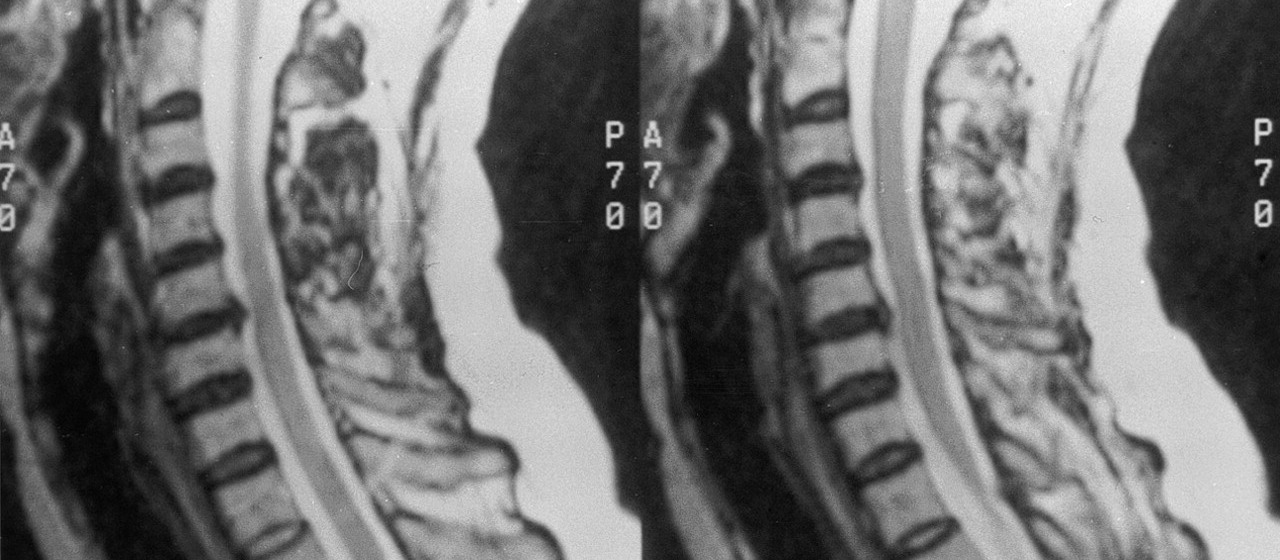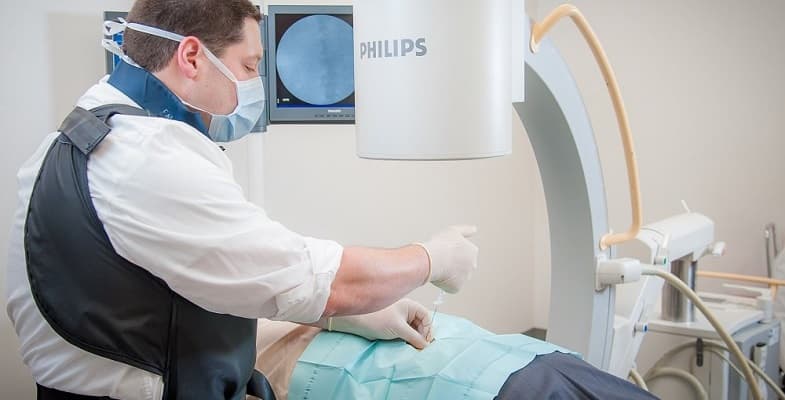What Is Cervical Radiculopathy?
Cervical radiculopathy refers to the damage of spinal nerves that are located in the neck. More specifically, it is characterized by the irritation, compression, or damage of nerves in the neck area, resulting in symptoms such as numbness, pain, muscle weakness, muscle control deficits (motor problems), the loss of sensory function, and tingling in the skin, hands, or fingers. If a nerve becomes compressed or pinched, it does not receive an adequate supply of blood and this reduces its ability to function properly.
Causes Of Cervical Radiculopathy
The pain that is caused by cervical radiculopathy is typically found to be the result of a pinched, compressed, or irritated nerve. A pinched or compressed nerve may develop because of an injury or due to damage from structures that surround the nerve. For example, damaged cartilage, a herniated or slipped disc, or even injured tendons can place excessive pressure on nerves.
One of the most common causes of cervical radiculopathy is cervical disc herniation. This is a condition that develops when a spinal disc in the neck begins to bulge outward and squeezes nerves that are in the surrounding area. Additional conditions such as arthritis, spondylarthrosis, a tumor, an infection in the spine, or a nerve injury may also be responsible for the symptoms that are associated with cervical radiculopathy. A car accident, heavy lifting, or even diabetic neuropathy (nerve damage) may be the cause of cervical radiculopathy as well. Smoking is also believed to increase the risk of developing this condition as smoking reduces blood circulation.
A wide variety of diagnostic tools can be utilized to determine whether an individual has cervical radiculopathy. In particular, the upper limb tension test (ULTT), the Spurling test (ST), and the shoulder abduction test (SAT) are commonly used to visualize nerve roots and the extent of possible nerve damage. Electromyography and magnetic resonance imaging (MRI) may also be performed in order to help a physician rule out other potential conditions.
Treatments For Cervical Radiculopathy
If cervical radiculopathy is diagnosed, the first line of treatment that is typically recommended is over-the-counter pain medications such as acetaminophen or ibuprofen, cold compresses, or prescription strength pain medication. A cervical collar or neck brace can also provide added support for the neck. In addition, therapeutic pillows may be helpful because they support both the head and neck, while preventing injuries that may occur from sleeping in a bad position.
For cervical radiculopathy pain that is hard to pinpoint, stronger pain medication may be prescribed for a trial period. Opioids such as oxycodone, codeine, or morphine, for example, effectively relieve nerve-related pain, especially when the pain has been unresponsive to high doses of prescription pain medication (e.g., ibuprofen). However, the use of opioids is only recommended for short periods because opioid treatment is associated with several risks and complications. More specifically, the prolonged consumption of opioids increases the risk of developing opioid abuse, dependence, or an overdose. Therefore, individuals who are prescribed opioids are monitored closely while they are taking them. If a patient’s level of pain persists during opioid treatment or returns, then a different treatment option should be discussed.
Steroid Injections
Another treatment approach that is effective at reducing cervical radiculopathy pain is a steroid injection. A patient may receive what is known as a cervical injection or an epidural injection. Both types of injections involve a similar technique in which medication is administered to the affected nerve roots. The medication, which is a combination of steroids and a numbing agent (e.g., an anesthetic), is injected between the spinal vertebrae in the neck. For an epidural injection, the medication may be injected in the epidural space along the spine by inserting the needle through the middle of the back, the lower back, or through the side. The anti-inflammatory effects of the steroids are believed to make these types of injections effective at alleviating pain. Steroid injections are brief, outpatient procedures and most patients report dramatic pain relief shortly after the injection. In addition, the risks associated with this type of treatment, which include an infection, minor bleeding, headaches, and possible nerve damage, are minimal.
Nerve Blocks
A nerve block is another approach that is often used to treat cervical radiculopathy. The procedure is similar to that of steroid injections in that it involves the administration of medication into the region of the neck where the affected nerve roots are located. However, instead of administering an anesthetic and steroids, a substance that destroys nerve tissue is injected. This process blocks the nerve from transmitting pain signals to the brain and has been shown to provide patients with relief that lasts much longer than steroid injections. This procedure if typically recommended if two steroid injections have been administered successfully. Risks that are associated with nerve blocks include potential injuries to veins, arteries, or healthy nerve roots when the needle is being inserted into the body. Physicians typically visualize the placement of the needle through the use of imaging devices such as an ultrasound or fluoroscope in order to prevent these types of complications.
Conclusion
Cervical radiculopathy is a painful condition that is caused by irritated, compressed, or damaged nerves in the neck and it often causes symptoms such as tingling in the extremities, muscle weakness, a loss of sensory function, and motor problems. Although the majority of these symptoms affect the neck, the pain that is experienced may radiate to different regions of the upper body. A number of different conditions such as a herniated disc or a traumatic injury may cause cervical radiculopathy. Pain management approaches that are typically discussed when this condition is diagnosed include pain relievers, cold compresses, physical therapy, and short-term opioid treatment. If these methods are ineffective, steroid injections or a nerve block may be recommended. The latter two procedures can be performed quickly and they usually result in long-term pain relief.
References
- Ghasemi M, Golabchi K, Mousavi SA, Asadi B, Rezvani M, Shaygannejad V, Salari M. The value of provocative tests in diagnosis of cervical radiculopathy. J Res Med Sci. 2013;18(Suppl 1):S35-S38.
- Ghasemi M, Masaeli A, Rezvani M, Shaygannejad V, Golabchi K, Norouzi R. Oral prednisolone in the treatment of cervical radiculopathy: A randomized placebo controlled trial. Res Med Sci. 2013;18(Suppl 1):S43-S46.
- Kuijper B, Tans JT, Schimsheimer RJ, van der Kallen BF, Beelen A, Nollet F, et al. Degenerative cervical radiculopathy: Diagnosis and conservative treatment. A review. Eur J Neurol. 2009;16:15-20.
- Manchikanti L, Cash KA, Pampati V, Wargo BW, Malla Y. Management of Chronic Pain of Cervical Disc Herniation and Radiculitis with Fluoroscopic Cervical Interlaminar Epidural Injections. Int J Med Sci. 2012;9(6):424-434.
- Onks CA, Billy G. Evaluation and treatment of cervical radiculopathy. Prim Care. 2013;40(4):837-848.
- Park Y, Ahn JK, Sohn Y, Jee H, Lee JH, Kim J, Park KD. Treatment Effects of Ultrasound Guide Selective Nerve Root Block for Lower Cervical Radicular Pain: A Retrospective Study of 1-Year Follow-up. Ann Rehabil Med. 2013;37(5):658-667.



